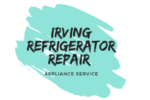Learning about Refrigerant helps in troubleshooting any refrigerator repair problems, this article is an excerpt from the Air conditioning service manual. This article dives in detail about refrigerant, what are they?. why we need it?
Currently, dichlorodifluoromethane (CC12F2), commonly referred to as R-12, is the fluid most often used to move heat in mobile(automotive and farm equipment) air conditioning systems. The name “Freon-12” are registered trademarks and should be used only when referring to this type of product produced by DuPont. Refrigerant-12 is one of several refrigerants in the chlorofluorocarbon (CFC) family targeted for control and ultimate elimination. The chlorine atom is responsible for the ozone breakdown in the earth’s stratosphere. R-12 is made of one carbon atom, two fluorine atoms, and two chlorine atoms. Like all other CFCs, it is heavier than air and will fall to the lowest point. When released into the air, the bonds break down and the atoms separate. The separate atoms are lighter than air and the individual components will rise into the higher atmosphere. The carbon and fluorine atoms do little harm to the ozone layer, but the chlorine atom reacts chemically with the O3 of the ozone layer reducing it to O2 The result is increased skin cancer and other medical problems. The lifetime of R-12 (CFC-12) is estimated to be 130-145 years, so the long term effects may not be known until long after the original release. Hydrochlorofluorocarbons (HCFC) are similar, but they have an atom of hydrogen that causes them to break down more quickly. HCFCs (Such as HCFC-22 or R-22) is also used for refrigerants in some systems, but they too may be found unsuitable for use soon, as a result of their adverse effects on global warming (greenhouse effect). All the resulting effects must be considered, not just the desirable cost or cooling ability.
| Ozone depletion potential | Estimated Atmospheric Lifetime (Years) | Direct Global warming potential | |
| Refrigerant | |||
| CFC-11 (R-11)….. | 1.0 | 60-75 | 2,000 |
| CFS-12 (R-12)….. | 1.0 | 130-145 | 6,200 |
| HCFC-22 (R-22)…. | 0.05 | 15-19 | 680 |
| HCFC-123 (R-123)…. | 0.02 | 2-2.25 | 38 |
| HCFC-134a (R-134a)…. | 0 | 10-16 | 550 |
An agreement(called the Revised Montreal Protocol) regarding global ozone depletion was signed by fifty countries, including the United States of America, that calls for complete phase-out of CFC (Chlorofluorocarbon) by the year 2000. The United States went further with amendments to the Clean Air Act and the U.S.Congress required the Environmental Protection Agency (EPA) to regulate the use and disposal of CFCs. The Congress also gave the EPA authority to issue stricter regulations to control CFCs if immediate action is required. What was once innocent CFC dumping to the atmosphere is now contrary to federal and international laws. International negotiations regarding global warming (greenhouse effect) will probably lead to a multi-national agreement similar to the Montreal Protocol, further limiting the use of refrigerants.
Without describing all the adverse, long-range (and some not so long-range) effects caused by CFCs, it is easy to see that many people are concerned about the release of CFCs and HCFCs into the atmosphere.
One element of the Clean Air Act requires that anyone servicing 100 or more refrigeration systems using R-12 per year, beginning January 1, 1992, use recycling equipment and be certified in the equipment’s use. Those servicing fewer than 100 systems per year will be required to file government paperwork permitting them to service fewer than 100 systems per year will be required to file government paperwork permitting them to service fewer than 100 systems only until July 1, 1992. Current costs of the required recycling equipment may easily be in excess of $3,000. The desired effect of these laws is to limit the environmental damage that affects each of us, our children, and generations of children to come. Circumventing the laws or the intent of the laws will ultimately hurt all of us.
Discharge of refrigerant from the system Should be accomplished using only an approved recycling or recovery system. DO NOT release any refrigerant to the atmosphere. if approved recycling or recovery equipment is not available, contact a service center with approved equipment to remove refrigerant from system before beginning service. Attach the manifold gauge set to the system and follow approved procedures to extract refrigerant from the system.
Avoid uncontrolled discharge of refrigerant into the atmosphere through loose connections, burst hoses and damaged components by periodic inspection, service, and repair.
At this point, only three statements can be made with certainty:
- Refrigerants will become much more expensive.
- Laws governing refrigerant, its use and its service will change.
- Expensive equipment will be required to legally service all types of air conditioning
For Appliance Repair in Irving TX, call us for same-day service.
Continue reading our article on Central Heating Units

